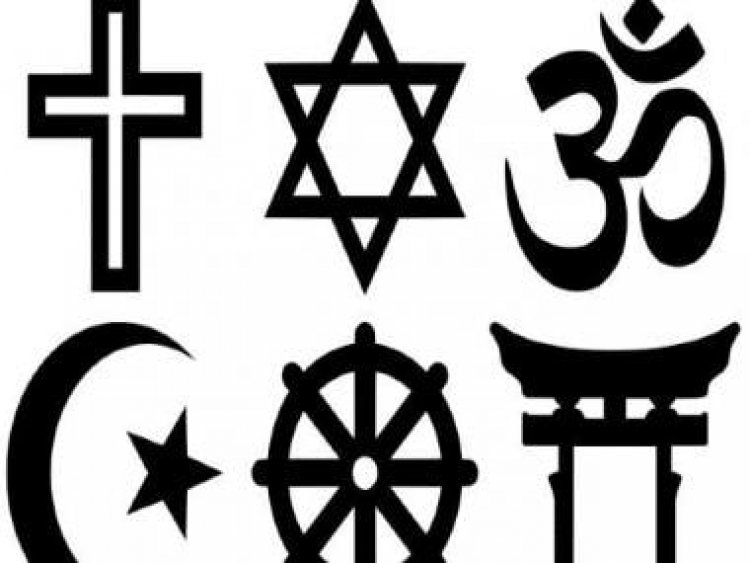Dharma Files | On sharing one’s faith: Varieties of ecumenism
Dharma Files | On sharing one’s faith: Varieties of ecumenism

The history of the interfaith movement provides enough material to enable us to distinguish among degrees of sharing. Each mode seems to involve a greater measure of sharing, at least from one point of view. The first kind may be called the ‘Vatican view’ of sharing, for want of a better word. The document, released by the Vatican in 1965, which invited the various religions to join in prayer, distinguished carefully between: i) coming together to pray, and ii) coming to pray together. The document clarified that the Vatican was inviting faiths to come together and then pray according to their own rites; they were not being invited to come and pray together — in some form of common prayer acceptable to all.
Such a mode of sharing one’s faith maintains faith distinctions maximally even as the faiths come together.
A second mode of sharing one’s faith may be described by the expression: ‘religious participation’. In this mode of sharing, one participates in the rites and rituals of other faiths consistently with one’s own beliefs. For instance, a Muslim may visit a Hindu temple but may not bow before the images, which would be inconsistent with the basic tenets of Islam. Similarly, the Hindu may share in the iftar at Ramzan, but may not partake of the meat dishes if he or she happens to be a vegetarian.
A third mode of sharing faith involves a greater degree of participation over the second, just as the second did over the first. In the first, one comes together to pray but not to pray together; in the second, one goes further, and participates in one another’s prayers or rituals consistent with one’s own belief. The third form of participation might take the form of joint prayers, in which passages from various traditions are recited together at the same prayer meeting. Such anthologised prayers, read in the presence of the ministers of the various faiths, would carry the degree of participation a step forward.
This form of ecumenical sharing was popularised by Mahatma Gandhi, whose prayer meetings typically included the recitation of passages from the various scriptures of the world. This mode of sharing has been an important feature of the Hindu renaissance in the nineteenth and twentieth centuries. It can be traced back to the collection of passages from various parts of the Hindu scriptures, which were selected by Debendranath Tagore (1817-1905) for use in his gatherings. This practice soon went beyond Hinduism, and insightful passages from the scriptures of other world religions came to be included in due course. In one case, when the refugees, who had come to India from Pakistan objected to the reading of a passage of the Qur’an at Gandhi’s prayer meeting in Delhi, Gandhi had the relevant passage from the Qur’an translated into Hindi. The effect was palpable; for a moment the objection disappeared. But as soon as the recitation in the original Arabic was resumed, the protest started again, and Gandhi insisted that either passages from all scriptures in their original form were to be recited, or none.
The sentiment underlying these modes of participation could become progressively more refined. For instance, one might begin one’s participation in ecumenism with the sentiment that one looks upon all religions with an equal eye; that one looks upon all of them impartially. This position could be represented with the term sarva-dharma-sama-bhāva.
Even in becoming a votary of ecumenism, one could characterise one’s attitude as looking upon all religions of the world as equally ennobling — all of them being morally inspiring in a spiritually salvific sense. This attitude could be described as sarva-dharma-sad-bhāva — or goodwill towards all religions, which is a step more advanced than merely looking upon all religions as equal in a neutral way.
If one advances further, then one might come to a stage where one considers oneself inheriting all the religious traditions of humanity equally, and not just one’s own. This attitude could then be described as sarva-dharma-mama-bhāva.
It might be reasonable to close this meditation on forms of ecumenism by invoking a suggestive trichotomy from Hinduism: sattva, rajas, and tamas This trichotomy seems to possess the merit of categorising the whole range of interaction among religions. Sattva stands for what is subtle and refined, rajas for vigour and competition, and tamas for what is inert and stolid. In terms of this trichotomy, interaction among the religions, characterised by discord and conflict, could be described as characterised by tamas. Similarly, the relationship among religions characterised by active interaction and competition –– in the positive sense of the word –– may be described as having the nature of rajas. And interaction among religions at the level of mutual understanding and accord, would then be distinguished by the quality of sattva.
As the honourable Charles Carrol Bonney declared at the opening session of the World’s Parliament of Religions in Chicago, on 11 September 1893, “We meet on the mountain height of absolute respect for the religious convictions of each other…”
This is a charming metaphor, especially if we consider that the mountain heights are often covered in mist, suggesting thereby the somewhat concealed nature of the ultimate reality we all talk about, and also suggesting that, as we move up the mountain of spiritual progress, differences seem to appear less important.
The author, formerly of the IAS, is the Birks Professor of Comparative Religion at McGill University in Montreal Canada, where he has taught for over thirty years. He has also taught in Australia and the United States and at Nalanda University in India. He has published extensively in the fields of Indian religions and world religions. Views expressed are personal.
Read all the Latest News, Trending News, Cricket News, Bollywood News,
India News and Entertainment News here. Follow us on Facebook, Twitter and Instagram.
What's Your Reaction?


























































